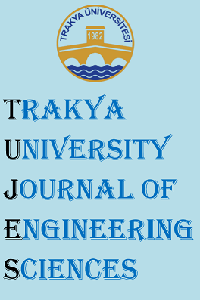KÖPRÜ YAPILARININ DOĞRUSAL OLMAYAN ANALİZİ
Altyapı tesislerinin doğru ve sağlık takibi için, yapısal hasarın doğrusal olmayan davranışının belirlenmesi esastır. Bu tür doğrusal olmayan davranışların kesin olarak değerlendirilmesi için, bu yapıların belirli deprem hareketlerine maruz kaldıklarında nasıl işlev görecekleri incelenmelidir. Davranışı belirlemek için, doğrusal olmayan statik veya doğrusal olmayan zaman artımı (time history) yöntemi kullanılabilir, ancak yerel etkiler de göz önüne alınmalıdır. Doğrusal olmayan statik yaklaşımla doğrusal olmayan zaman artımı yöntemi yaklaşımı, birçok serbestlik derecesi ve yerel hasarlar içeren karmaşık ve doğrusal olmayan davranışın değerlendirilmesi için yaygın olarak kullanılmaktadır. Doğrusal olmayan zaman artımı yönetimi, adım adım entegrasyon vasıtasıyla gerçekleştirilir. Bu etkili bir teknik olsa da, büyük yapılara uygulanması maliyetlidir ve sınırlayıcı olabilir. Bu yerel doğrusal olmayan sonuçların ve geleneksel adım adım bütünleştirme yönteminin yüksek hesaplama masrafının perspektifinde, modal süperpozisyon yaklaşımının doğrusal olmayan tekniklerle desteklenmesi veya element mod sentezi yaklaşımı tercih edilebilir. Bu makalede, yerel hasarların etkisini dikkate alan sınırlı yüksek modları olan doğrusal olmayan zaman artımı yöntemi önerilmiştir. Özellikle bazı betonarme ayakların, depremler sırasında esneme kapasitelerini aştığı ve bunun da büyük inelastik deformasyonları ve hasarları tetiklediği varsayılmaktadır. Hasar görmüş betonarme ayakların histerik davranışından aşırı derecede tetiklenen sismik etkiyi tanımlamak için değiştirilmiş Takeda modeli sunulmuştur. Önerilen yaklaşımın etkililiğinin doğrulanması için, hasar görmüş köprü yapısının doğrusal olmayan tepkileri, önerilen yaklaşımlar ve yukarıda açıklanan geleneksel doğrusal olmayan analiz yaklaşımı ile incelenmiştir.
Anahtar Kelimeler:
Doğrusal olmayan dinamik, histerik model, modifiye Takeda modeli, modal sıralama
NON-LINEAR ANALYSIS OF BRIDGE STRUCTURES
For the health tracking of civil infrastructures, it is essential to determine the non-linear behaviour connected to structural damage. For the precise assessment of these types of non-linear behaviours, it is essential to evaluation of how these structures will function when exposed to specific earthquake movement. To determine the behaviour, non-linear static or non-linear time history analysis approach can be utilized, but the locally destroyed impact has to be also regarded. With the prominent impact of basic mode of non-linear static approach, non-linear time history evaluation approach is broadly utilized for the evaluation of complex non-linear behaviour with many degrees of freedom and with local damages. Non-linear time history analysis is generally performed by means of primary step-by-step integration. While this is a effective technique, its application to large structures is costly and may be occasionally prohibitively so. In perspective of these local non-linear consequences and high computational expense of the traditional step-by-step integration method, the application of the modal superposition approach prolonged to non-linear techniques or the element mode synthesis approach has been and remains to be an appealing concept. In this study, the non-linear time history evaluation method with some restricted higher modes accounting the impact of local damages is suggested. Specifically, some RC piers are presumed to be surpassed the yield capability throughout earthquakes and trigger large inelastic deformations and damage. To identify the seismic response extremely impacted by the hysteretic behaviour of destroyed RC piers, the modified Takeda model is presented. As a confirmation of effectiveness of suggested approach, the non-linear responses of damaged bridge structure are investigated among suggested approaches and above described traditional non-linear analysis approach.
Keywords:
Nonlinear dynamics, hysterical model, modified Takeda model, modal order,
___
- Banon, H., Biggs, J. M., and Irvine, H. M., (1981). Seismic damage in reinforced concrete frames. Journal of Structural Engineering, ASCE, Vol. 107, No. ST9, 1713-1729.
- Bazant, Z. P., and Oh, B. H., (1983). Crack band theory for fracture of concrete. Materials and Structures (RILEM, Paris), Vol. 16, 155-177.
- Chai, Y. H., Romstad, K. M., and Bird, S. M., (1995). Energy-based linear damage model for high-intensity seismic loading. Journal of Structural Engineering, Vol. 121, No. 5, 857-864.
- Chopra, A. K., (1995). Dynamics of structures: theory and applications to earthquake engineering. Prentice Hall, New Jersey.
- Chung, Y.S., Meyer, C. and Shinozuka, M. (1989), Modeling of Concrete Damage, ACI Structural Journal, 86(3), 259-271.
- Comi, C., and Perego U., (2001). Fracture energy based bi-dissipative damage model for concrete. International Journal of Solids and Structures, Vol. 38, No. 36-37, 6427-6454.
- Criesfield, M. A., (1982). Local instabilities in non-linear analysis of reinforced concrete beams and slabs. Proceedings of Institute of Civil Engineers, Part 2, Vol. 73, 135-145.
- Crisfield, M. A., (1996). Nonlinear analysis of solids and structures, Volume 1: Essentials, Willey & Sons, New York.
- D’Aveni, A. and Muscolino, G. (2001), Improved dynamic correction method in seismic analysis of both classically and non-classically damped structures, Earthquake Engrg. and Struct. Dynamics, 30, 501-517
- Dikens, J.M., Nakagawa J.M., and Wittbrodt M.J. (1997), A critique of mode acceleration and modal truncation argumentation methods for modal response analysis, Computer & Structures, 62:6, 985-998
- ISSN: 2147-0308
- Yayın Aralığı: Yılda 2 Sayı
- Başlangıç: 2000
- Yayıncı: Trakya Üniversitesi
Sayıdaki Diğer Makaleler
SIKIŞTIRMA ORANINI ARTTIRMAK İÇİN BÖLÜNMÜŞ RESİMLERİ KULLANAN ENTROPİ TABANLI BIR TAHMİN ALGORİTMASI
MOBİL CİHAZLARDA RSA ALGORİTMASININ PERFORMANS OPTİMİZASYONU
Tarık Yerlikaya, Hakan Gençoğlu
KÖPRÜ YAPILARININ DOĞRUSAL OLMAYAN ANALİZİ
NANOEMÜLSİYONLAR ÜZERİNE BİR DERLEME: HAZIRLAMA METOTLARI VE STABİLİTELERİ
KRİPTOLOJİDE KULLANILAN ASAL SAYI TEST ALGORİTMALARI
YER ALTI METRO İSTASYONLARINDA MEKAN TASARIMI ÜZERİNE BİR ARAŞTIRMA
Didem Aktop Maden, Erkan Avlar
ÖZEL KİRALIK KONUT SEKTÖRÜ VE POLİTİKALARI: DÜNYADAN FARKLI YAKLAŞIM VE DÜZENLEME ORNEKLERİ
